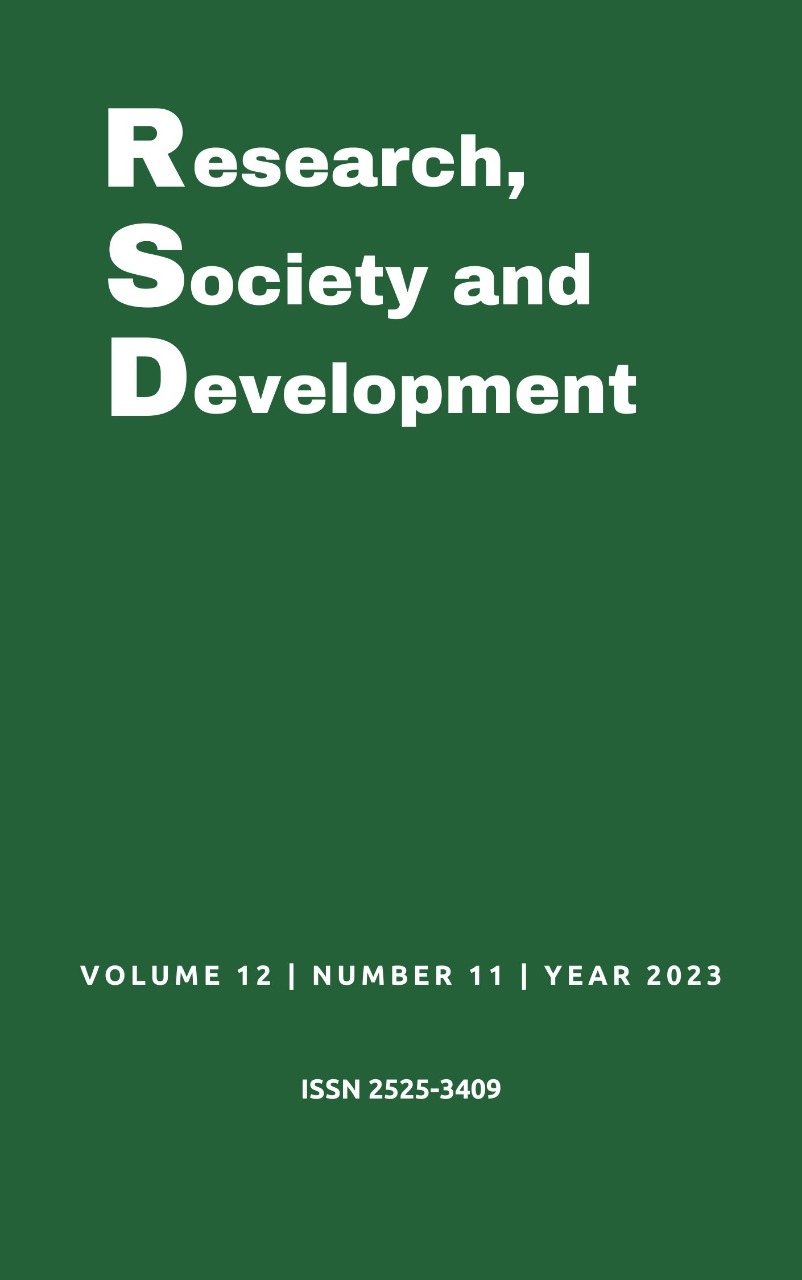Betaglucan as an immunomodulatory agent for children: An integrative review
DOI:
https://doi.org/10.33448/rsd-v12i11.43533Keywords:
Betaglucan, Immunomodulation, Children.Abstract
Betaglucan is a polymer present on the cell wall of several compounds. Its structure is capable of interacting with the body's defense cells, stimulating them. For many years the immunomodulatory properties of this polymer have been studied. Objective: This study aimed to establish a positive association between the use of beta-glucan and the increase of immunity in children. Methodology: The integrative review was carried out in the main databases online. Final considerations: several studies have pointed to beta-glucan as a possible immunomodulator, which is a reality, easily, accessible and inexpensive.
References
Bacha, U., Nasir, M., Iqbal, S., & Anjum, A. A. (2017). Nutraceutical, Anti-Inflammatory, and Immune Modulatory Effects of β-Glucan Isolated from Yeast. BioMed Research International, 2017, 1–14. https://doi.org/10.1155/2017/8972678
Bashir, K. M., & Choi, J.-S. (2017). Clinical and Physiological Perspectives of β-Glucans: The Past, Present, and Future. International Journal of Molecular Sciences, 18(9), 1906. https://doi.org/10.3390/ijms18091906
Kim, H. S., Hong, J. T., Kim, Y., & Han, S.-B. (2011). Stimulatory Effect of β-glucans on Immune Cells. Immune Network, 11(4), 191. https://doi.org/10.4110/in.2011.11.4.191
Jesenak, M., Majtan, J., Rennerova, Z., Kyselovic, J., Banovcin, P., & Hrubisko, M. (2013). Immunomodulatory effect of pleuran (β-glucan from Pleurotus ostreatus) in children with recurrent respiratory tract infections. International Immunopharmacology, 15(2), 395–399. https://doi.org/10.1016/j.intimp.2012.11.020
Macchi, A., Esposito, C., Debernardi, F., Simoncini, D., Peirolo, A. & Castelnuovo, P. (2018). The role of immunomodulation therapy in preventing recurrent respiratory infections in children. ResearchGate.net. https://www.researchgate.net/publication/323079575_The_role_of_immunomodulation_therapy_ in_preventing_recurrent_respiratory_infections_in_children
Magnani, M., & Castro-Gómez, R. J. H. (2008). Beta-glucana de Saccharomyces cerevisiae: constituição, bioatividade e obtenção. Semina: Ciências Agrárias, 29(3), 631–650. https://doi.org/10.5433/1679-0359.2008v29n3p631
Mendes, K. D. S., Silveira, R. C. de C. P., & Galvão, C. M. (2008). Revisão integrativa: método de pesquisa para a incorporação de evidências na saúde e na enfermagem. Texto & Contexto - Enfermagem, 17(4), 758–764. https://doi.org/10.1590/s0104-07072008000400018
Rennerova, Z., Picó Sirvent, L., Carvajal Roca, E., Paśnik, J., Logar, M., Milošević, K., Majtan, J., & Jesenak, M. (2022). Beta-(1,3/1,6)-D-glucan from Pleurotus ostreatus in the prevention of recurrent respiratory tract infections: An international, multicentre, open-label, prospective study. Frontiers in Pediatrics, 10. https://doi.org/10.3389/fped.2022.999701
Pasnik, J., Ślemp, A., Cywinska-Bernas, A., Zeman, K. & Jesenak, M. (2017). Preventive effect of pleuran (β-glucan from Pleurotus ostreatus) in children with recurrent respiratory tract infections – open-label prospective study. Curr Pediatr Res; 21 (1), 99-104
Richter, J., Svozil, V., Král, V., Rajnohová Dobiášová, L., Stiborová, I., & Vetvicka, V. (2014). Clinical trials of yeast-derived β-(1,3) glucan in children: effects on innate immunity. Annals of Translational Medicine, 2(2), 15. https://doi.org/10.3978/j.issn.2305-5839.2014.02.01
Richter, J., Svozil, V., Král, V., Rajnohová Dobiášová, L., & Vetvicka, V. (2015). β-glucan affects mucosal immunity in children with chronic respiratory problems under physical stress: clinical trials. Annals of Translational Medicine, 3(4). https://doi.org/10.3978/j.issn.2305-5839.2015.03.20
Rop, O., Mlcek, J., & Jurikova, T. (2009). Beta-glucans in higher fungi and their health effects. Nutrition Reviews, 67(11), 624–631. https://doi.org/10.1111/j.1753-4887.2009.00230.x
Pérsio Roxo Júnior, Carvalho, B., & Fabiola Scancetti Tavares. (2009). Infecções de repetição: o que é importante para o pediatra. 27(4), 430–435. https://doi.org/10.1590/s0103-05822009000400013
Smith, P. B., Benjamin, D. K., Alexander, B. D., Johnson, M. D., Finkelman, M. A., & Steinbach, W. J. (2007). Quantification of 1,3-β- d -Glucan Levels in Children: Preliminary Data for Diagnostic Use of the β-Glucan Assay in a Pediatric Setting. Clinical and Vaccine Immunology, 14(7), 924–925. https://doi.org/10.1128/cvi.00025-07
Stier, H., Ebbeskotte, V., & Gruenwald, J. (2014). Immune-modulatory effects of dietary Yeast Beta-1,3/1,6-D-glucan. Nutrition Journal, 13(1). https://doi.org/10.1186/1475-2891-13-38
Talbott, S. M., Talbott, J. A., Talbott, T. L., & Dingler, E. (2012). β-Glucan supplementation, allergy symptoms, and quality of life in self-described ragweed allergy sufferers. Food Science & Nutrition, 1(1), 90–101. https://doi.org/10.1002/fsn3.11
Vetvicka, V., Richter, J., Svozil, V., Dobiášová, L. R., & Král, V. (2013). Placebo-driven clinical trials of yeast-derived β-(1,3) glucan in children with chronic respiratory problems. Annals of Translational Medicine, 1(3), 26–26. https://doi.org/10.3978/j.issn.2305-5839.2013.07.01
Vetvicka, V., Vannucci, L., Sima, P., & Richter, J. (2019). Beta Glucan: Supplement or Drug? From Laboratory to Clinical Trials. Molecules, 24(7). https://doi.org/10.3390/molecules24071251
Vetvicka, V., & Vetvickova, J. (2014). Anti-Stress Action of an Orally-Given Combination of Resveratrol, β-Glucan, and Vitamin C. Molecules, 19(9), 13724–13734. https://doi.org/10.3390/molecules190913724
Wichers, H. (2009). Immunomodulation by food: promising concept for mitigating allergic disease? Analytical and Bioanalytical Chemistry, 395(1), 37–45. https://doi.org/10.1007/s00216-009-2838-1
Downloads
Published
Issue
Section
License
Copyright (c) 2023 Larissa Marrocos de Oliveira; Glauber Amaral de Oliveira

This work is licensed under a Creative Commons Attribution 4.0 International License.
Authors who publish with this journal agree to the following terms:
1) Authors retain copyright and grant the journal right of first publication with the work simultaneously licensed under a Creative Commons Attribution License that allows others to share the work with an acknowledgement of the work's authorship and initial publication in this journal.
2) Authors are able to enter into separate, additional contractual arrangements for the non-exclusive distribution of the journal's published version of the work (e.g., post it to an institutional repository or publish it in a book), with an acknowledgement of its initial publication in this journal.
3) Authors are permitted and encouraged to post their work online (e.g., in institutional repositories or on their website) prior to and during the submission process, as it can lead to productive exchanges, as well as earlier and greater citation of published work.


